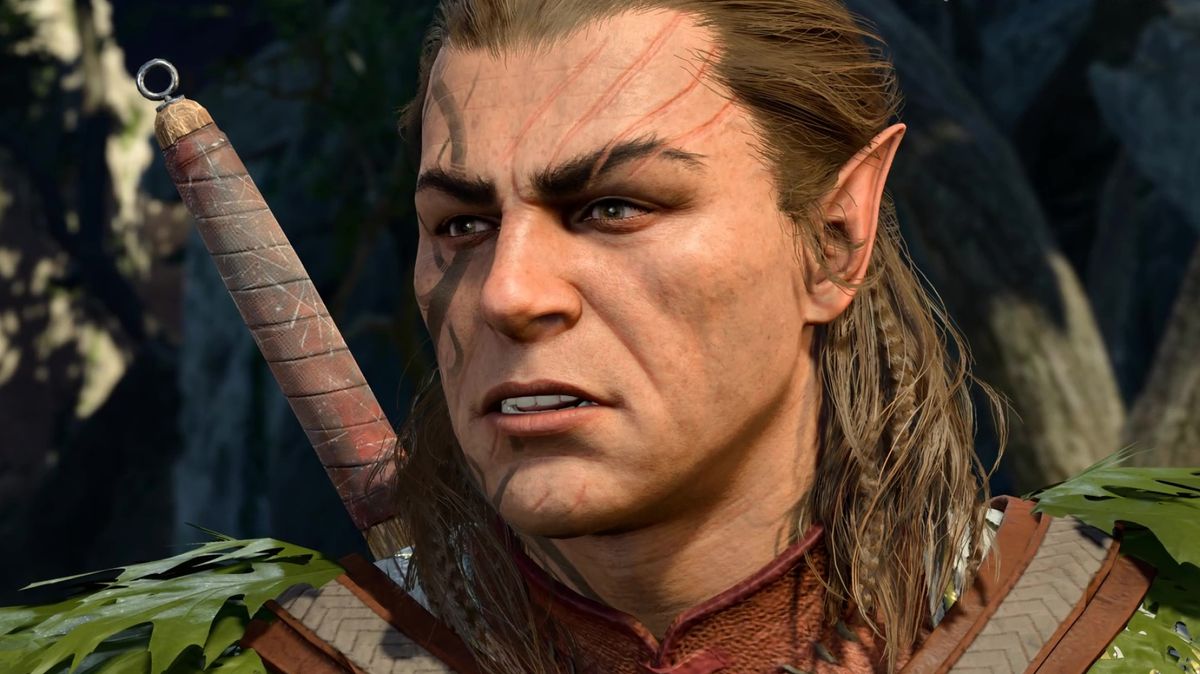Recommending League of Legends to new players is a tricky task in 2021. At ten years old, the game itself is as complex as it’s ever been, with a 157-strong roster of characters for new players to get to grips with. At the same time, its world is more accessible than ever; a sprawling, beautifully-realised fantasy continent with epic character-driven narratives spanning the entire rich tapestry. Riot’s card game, Legends of Runeterra, offered the first hints at how those stories might be told outside of League of Legends, with animated Netflix series Arcane (opens in new tab) following suit, but if you’re looking for a more interactive narrative, look no further than Ruined King.
Named for primary antagonist Viego, Ruined King takes place across two parts of League of Legends’ continent of Runeterra. The first is Bilgewater, a chaotic and largely lawless pirate haven on the edge of the world, a labyrinthine city built from the skeletons of shattered ships and currently recovering from the iron fist of former leader Gangplank slain at the hands of new pirate queen Miss Fortune. With her hold on her new city still tentative, her old nemesis perhaps more alive than previously thought, and a supernatural force harrowing her citizens, Bilgewater’s new leader is forced to sail to the game’s second location, The Shadow Isles, a once-utopic civilisation brought low by Viego and his destructive love for his queen.
While both the joint settings and the narrative that ties them together are well established within League of Legends, Ruined King approaches the whole thing from a new direction thanks to a surprisingly mixed roster. Miss Fortune calls Bilgewater home, as do Illaoi – the oracle of a Kraken-like goddess – and Pyke, an undead assassin. The rest of the group of six playable characters are Braum, a kind-hearted strongman from the far north of Runeterra, and Yasuo and Ahri, who stem from the mystical land of Ionia. Few of these characters cross paths in League of Legends lore, and while Ruined King adds some depth to the stories of those that do, it also reintroduces these relationships, making this a very accessible starting point for a wide cross-section of Runeterra.
Stand behind me

Familiarity with Riot’s MOBA isn’t required in combat either. Each characters’ most iconic skills are adapted to fit the turn-based format of Ruined King, but new ideas are offered too. Braum, for example, whose role in League of Legends is to physically stand in the way of incoming damage, gains the ability here to grant himself and his allies more traditional shields. Fights can be a little limited – only three characters can appear at a time, and the supportive nature of Braum and Illaoi coupled with a narrative-centric rotation of primary damage dealers means you don’t have all that much freedom to choose your approach, but a wide array of enemies means you’re constantly weighing up your options in combat anyway.
‘Lanes’ – Ruined King’s spin on traditional turn-based combat – adds to that feeling of diversity. Every character has a few ‘Instant’ abilities to hand. These activate straight away, but tend to have pretty limited effects. More signature moves, however, take time to cast, and you’ll want to consider exactly when they’ll trigger. A timeline at the bottom of the screen lays out when each character will take their turn, letting you manipulate the order to slot abilities in at the optimal time. Illaoi’s healing spells won’t be much use on a full-health target, so move them from the default ‘Balanced’ Lane into the ‘Power’ Lane, and they’ll cast slower, letting your opponent deal damage but healing for a little extra to make up for it. If you just want to get in a quick hit, using the ‘Speed’ Lane limits your damage but ensures you’ll make your chosen move faster.
A Pirate’s Life

Beyond the lane system, Ruined King is a pretty traditional RPG. An artistically-detailed overworld provides looting and an enchantment system, side-quests and bounties, and even a surprisingly detailed fishing minigame, but the attention is very clearly on your roster, not the wider world. That can make Bilgewater in particular feel a little shallow, but it also allows the narrative to trip along quickly, and makes this a far easier entry point to Runeterra than it might have been otherwise – time spent unpicking the setting in detail might have threatened to disrupt this game’s focused nature with the massive scope of the rest of League of Legends’ lore. A deeper dive is possible, with constant nods to the wider narrative scattered breadcrumb-style, throughout both locations, but you’ll definitely have to go hunting if you want to see everything.
Ruined King might not push the boundaries of modern role-playing games, but you could argue that’s not its intended purpose. Instead, it’s there to provide a standalone entryway into a complex world at the start of a fascinating new narrative journey. With Riot’s plans for its universe stretching ever beyond League of Legends, Ruined King is a safe, but confident and accessible first step.
Ruined King: A League of Legends story is available now on PC, PS4, PS5, Xbox One, Xbox Series X, and Nintendo Switch.
 Games News games, movies and TV you love.
Games News games, movies and TV you love.



